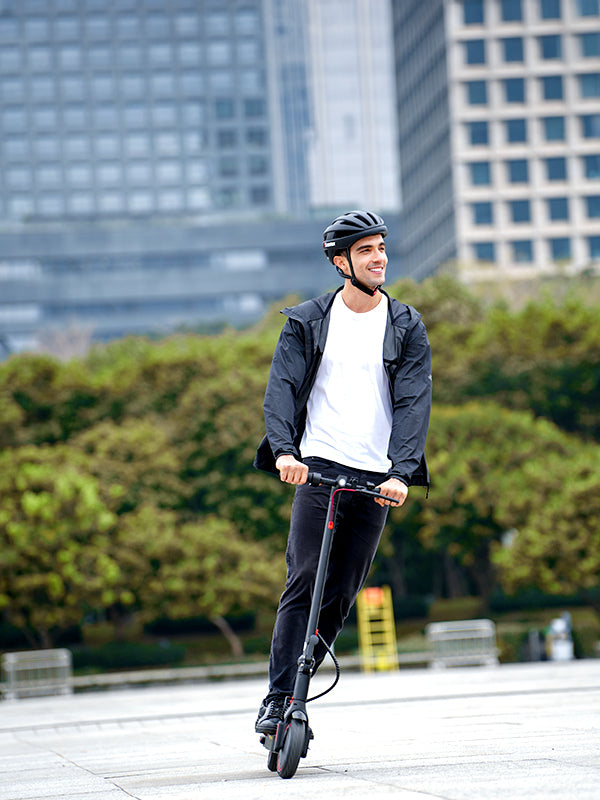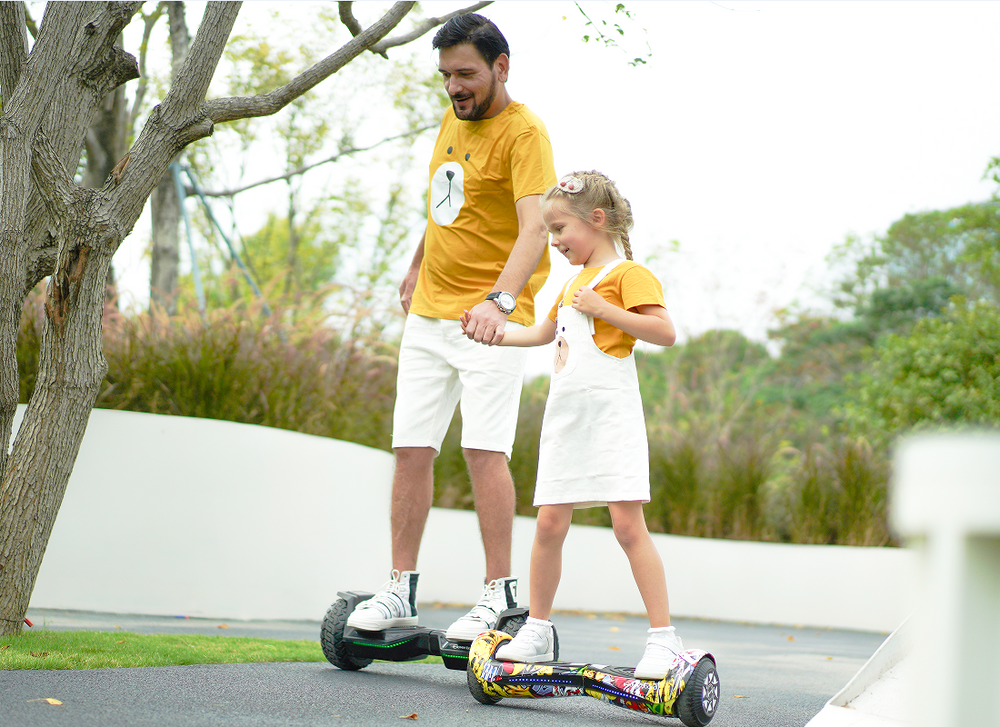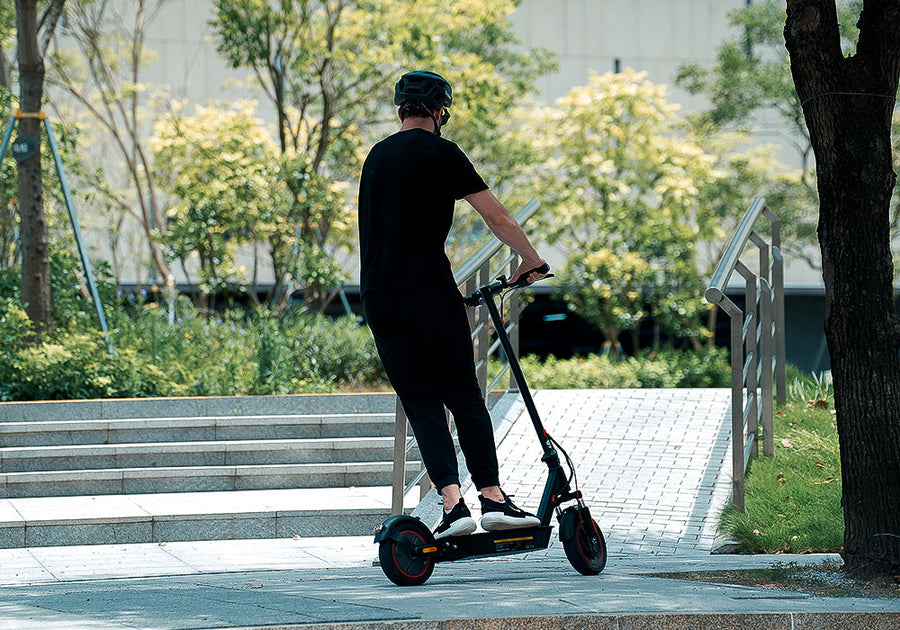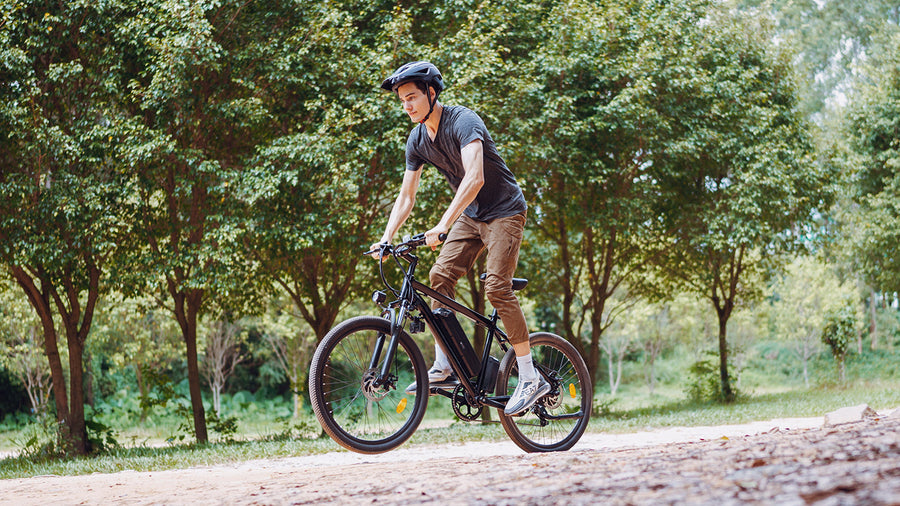
How Do You Charge a Hoverboard? Simple Steps for Safe Charging
Charging your hoverboard correctly is essential to keep it running smoothly and safely. Many riders overlook proper charging habits, which can shorten battery life or even cause performance issues. By following the right steps and using the correct charger, you’ll ensure consistent power and longer rides. In this guide, we’ll walk you through how to charge a hoverboard safely, along with expert tips to protect your battery and extend its lifespan.
Understanding Your Hoverboard Battery
Before learning how to charge a hoverboard properly, it’s important to understand what powers it. Most hoverboards use lithium-ion batteries, the same type found in smartphones and electric scooters. These batteries are lightweight, efficient, and capable of storing a large amount of energy—making them perfect for powering a hoverboard’s motor and internal systems. However, they also require proper handling and charging to maintain performance and safety.
A hoverboard battery typically ranges between 36V to 42V, depending on the model. Its lifespan depends on factors like how often you ride, how you charge it, and where it’s stored. To get the most out of your hoverboard battery, follow these essential guidelines:
-
Use the Original Charger: Always charge your hoverboard with the charger that came with it or one specifically designed for your model. Using an incompatible charger can damage the battery or shorten its lifespan.
-
Avoid Extreme Temperatures: Lithium-ion batteries perform best in moderate temperatures. Avoid charging or storing your hoverboard in very hot or cold environments.
-
Don’t Overcharge: Once the battery reaches 100%, unplug it to prevent overheating or battery degradation over time.
-
Charge Regularly: Even if you’re not using your hoverboard often, charge it every few weeks to keep the battery active and prevent it from losing capacity.
-
Watch for Signs of Damage: Swelling, overheating, or strange noises are warning signs that your battery may need professional inspection or replacement.
By understanding how your hoverboard battery works and how to care for it, you’ll ensure a safer, longer-lasting ride every time you hit the road.
How to Properly Charge Your Hoverboard
Knowing how to properly charge a hoverboard is key to keeping it performing at its best. Whether you’re charging it for the first time or maintaining it for regular use, following the correct process ensures your hoverboard stays safe, efficient, and ready for your next ride. Improper charging can lead to reduced battery life or even safety issues—so it’s worth taking a few careful steps each time you plug it in.
step-by-step guide
-
Turn Off Your Hoverboard
Always switch off your hoverboard before plugging it in. Charging while it’s on can cause overheating or shorten battery life.
-
Use the Original Charger
Only use the charger that came with your hoverboard or one that’s approved for your model. Generic or incompatible chargers may deliver the wrong voltage and damage the battery.
-
Connect the Charger Properly
Insert the charger into the charging port carefully. Make sure the connection is snug but not forced—forcing it may damage the pins inside the port.
-
Check the Charging Indicator Light
Most hoverboards have an LED indicator. The light usually turns red when charging and green when fully charged. Always confirm this before leaving it to charge.
-
Charge in a Safe Environment
Place your hoverboard on a flat, dry surface away from flammable materials. Avoid charging on beds, carpets, or near heat sources.
-
Monitor the Charging Time
Charging typically takes 2 to 4 hours, depending on the battery capacity. Once the light turns green, unplug it immediately to prevent overcharging.
-
Let the Hoverboard Cool Down
After charging, give your hoverboard a few minutes to cool before using it. This helps maintain optimal battery temperature and performance.
By consistently following these steps, you’ll keep your hoverboard battery healthy and extend its lifespan. A properly charged hoverboard not only lasts longer but also delivers smoother rides and better power efficiency every time you use it.
What to Do If Your Hoverboard Won’t Charge
It can be frustrating when your hoverboard refuses to charge, especially if you rely on it for daily rides. The good news is that most charging problems can be fixed with a few simple checks. Before assuming the battery is dead or the hoverboard is broken, go through these steps to identify and solve the issue.
Here are some practical things to check if your hoverboard won’t charge:
-
Inspect the Charger
Start by examining your hoverboard charger. Plug it into a working outlet and check if the charger’s indicator light turns on. -
If the light doesn’t turn on, the charger might be faulty and need replacing.
-
If it turns green immediately when plugged into the hoverboard, it might not be connecting to the battery properly.
-
Check the Charging Port
Dirt, dust, or bent pins inside the charging port can prevent proper contact. -
Carefully clean the port using a dry cloth or compressed air.
-
Make sure the pins are straight and not damaged.
-
Test the Power Outlet
Sometimes the issue isn’t with the hoverboard at all. Try plugging the charger into a different outlet to rule out electrical issues. -
Look for Battery Connection Issues
If the hoverboard has been dropped or bumped, the battery connector might have loosened. In that case, it’s best to have it inspected by a professional technician rather than opening it yourself. -
Observe for Warning Signs
Be alert for indicators such as unusual smells, excessive heat, or swelling. These are signs of a potentially damaged battery that needs to be replaced immediately for safety reasons. -
Try a Reset (If Applicable)
Some hoverboards can be reset to fix minor charging or balance issues. Hold the power button for 10–15 seconds (check your manual for exact instructions), then release it and try charging again.
If none of these steps solve the issue, the problem may lie in the battery management system (BMS) or the battery pack itself. At this point, it’s safest to contact the manufacturer or an authorized service center for diagnosis and replacement.
By checking these common problem areas first, you can often get your hoverboard charging again without expensive repairs—and keep your device running smoothly for longer.
Common Charging Mistakes to Avoid
Charging your hoverboard seems simple, but a few bad habits can shorten its battery life or cause charging issues. Knowing what not to do will help you keep your hoverboard safe and reliable.
Here are some common mistakes to avoid when charging your hoverboard:
-
Overcharging the Battery: Unplug your hoverboard once it’s fully charged to prevent overheating.
-
Using the Wrong Charger: Always use the original or brand-approved charger to avoid voltage damage.
-
Charging in Extreme Temperatures: Avoid hot, cold, or damp areas—stick to a cool, dry space.
-
Charging a Wet Hoverboard: Never charge right after riding through water or rain.
-
Skipping Regular Charging: If unused for weeks, give it a full charge to maintain battery health.
By avoiding these simple mistakes, you’ll help your hoverboard battery last longer and perform more efficiently.
Hoverboard Battery Maintenance Tips
Keeping your hoverboard battery in top condition ensures smooth rides, longer battery life, and reliable performance. Proper maintenance doesn’t take much effort but can make a big difference in how well your hoverboard performs over time. By following a few simple care practices, you can prevent common issues like weak battery life or charging failures.
Here are some effective hoverboard battery maintenance tips to follow:
-
Charge Regularly: Even if you’re not using your hoverboard daily, give it a charge every few weeks to keep the battery active and prevent deep discharge.
-
Avoid Full Drains: Don’t wait until your hoverboard completely runs out of power before charging. Lithium-ion batteries last longer when recharged before reaching 0%.
-
Store in a Cool, Dry Place: Keep your hoverboard away from direct sunlight, heat sources, and humidity. Ideal storage temperature is between 10°C and 25°C.
-
Unplug After Full Charge: Once the charger light turns green, disconnect it to prevent overcharging, which can wear down the battery cells.
-
Keep the Charging Port Clean: Dust and debris can block proper electrical contact. Wipe the port gently with a dry cloth when needed.
-
Use Only Approved Chargers: Always stick with the manufacturer’s charger or a certified replacement designed for your hoverboard model.
-
Avoid Frequent Short Charges: Try not to charge your hoverboard for just a few minutes at a time. Give it enough time for a full charge cycle for better efficiency.
By maintaining your hoverboard battery with these simple habits, you’ll extend its lifespan, enjoy more consistent performance, and ensure a safe, smooth ride every time you power up.
Don’t have a hoverboard yet? Check out iHoverboard
|
Specification |
|||||
|
Image |
 |
 |
 |
 |
 |
|
Regular Price |
£159.99 |
£199.99 |
£105.99 |
£309.99 |
£319.99 |
|
Sale Price |
£78.99 |
£104.99 |
£105.99 |
£148.99 |
£158.99 |
|
Wheel Size |
6.5" |
6.5" |
6.5" |
8.5" |
8.5" |
|
Motor Power |
Dual 350W |
Dual 250W (500W) |
Dual 350W (700W) |
Dual 400W (800W) |
Dual 400W (800W) |
|
Battery Capacity |
25.9V 2.6Ah |
36V 2Ah |
36V 2Ah |
36V 4Ah |
36V 4Ah |
|
Top Speed |
6.8 mph (11 km/h) |
7.5 mph (12 km/h) |
7.5 mph (12 km/h) |
7.5 mph (12 km/h) |
9.3 mph (15 km/h) |
|
Range / Ride Time |
40–60 min |
50–70 min |
7.5 miles (12 km) |
Up to 12.4 miles (20 km) |
Up to 12.4 miles (20 km) |
|
Charging Time |
2–3 h |
2–3 h |
2–3 h |
4–5 h |
4–5 h |
|
Max Weight |
119 lbs (54 kg) |
220 lbs (100 kg) |
200 lbs (100 kg) |
220 lbs (100 kg) |
220 lbs (100 kg) |
|
Age Recommendation |
3+ |
6+ |
6+ |
6+ |
6+ |
|
Tire Type |
Solid rubber |
Solid rubber |
Solid rubber |
Solid off-road tire |
Solid off-road tire |
|
Self-Balancing |
Yes |
Yes |
Yes |
Yes |
Yes |
|
Bluetooth Speaker |
Yes |
Yes |
Yes |
Yes |
Yes |
|
LED Lights |
Multicolor wheels & deck |
LED wheels & body |
LED light up deck & wheels |
LED wheels + body lights |
LED wheels + body lights + RGB side lights |
|
App Control |
No |
No |
No |
No |
Yes |
|
Riding Modes |
1 Mode |
3 Modes (8/10/12 km/h) |
1 Mode |
3 Modes (8/10/12 km/h) |
2 Modes (10/15 km/h) |
|
Climbing Angle |
N/A |
N/A |
N/A |
Up to 10° |
Up to 10° |
|
Product Weight |
10.1 lbs (4.6 kg) |
12.6 lbs (5.7 kg) |
14.3 lbs (6.5 kg) |
14.3 lbs (6.5 kg) |
14.3 lbs (6.5 kg) |
|
Water Resistant |
Yes |
Yes |
Yes |
Yes |
Yes |
|
Go Kart Compatibility |
No |
K3 Go Kart |
K3 Go Kart |
K3 Go Kart |
K3 Go Kart |
Conclusion
In conclusion, proper hoverboard battery maintenance is key to ensuring long-lasting performance, safe rides, and extended battery life. By following simple practices like regular charging, avoiding full drains, storing in optimal conditions, and using approved chargers, you can prevent common battery issues and keep your hoverboard running at its best. Consistent care not only improves reliability but also enhances your overall riding experience, making every journey smoother and worry-free.

































































Still, need help? Contact Us: support@ihoverboard.com
What's the option? Check out the option now!
Leave us a message